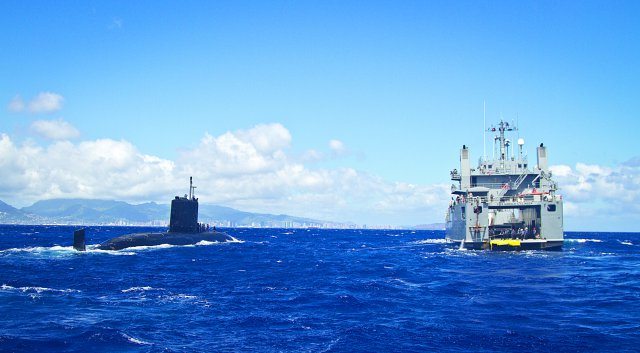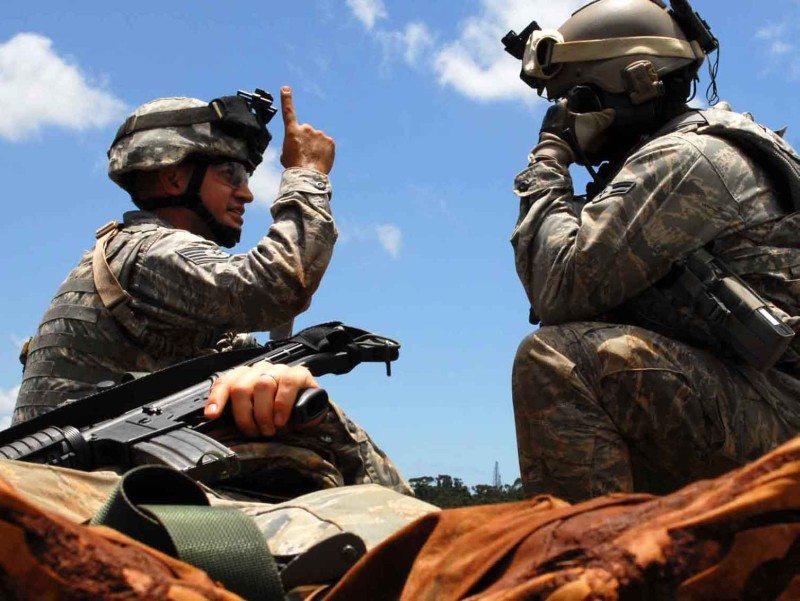Planning for future operations is a big part of the Chief of Transportation’s job, and it’s a role that Brig. Gen. Stephen E. Farmen relishes.
Keeping the Transportation Corps workforce, which numbers well over 70,000 today, and its capabilities stronger than ever while moving deeper into the 21st century is an important part of his vision, he said.
“The vision for our corps is to be integrators of deployment and distribution in all we do — from the people we produce, to the equipment we modernize, to the concepts, doctrine and force structure we develop,” said Farmen. “We must be a bastion of transportation innovation with emphasis on adaptive training and expertise-producing leaders. All our efforts are designed to hinge around this vision as we shape the future.”
To help shape that future, Farmen’s team is releasing a plan called “Strategic Blueprint 3.0” at the annual Transportation Symposium next week. It lays out the lines of effort to get to 2020 and beyond.
“Our goal is for this to be an adaptive blueprint providing a road map to develop leaders and develop as a leader, enable deployment and distribution, and do it in a joint environment,” he said. “If all our lines of effort and energy are not driving toward promulgating our intent to connect, integrate and deliver the transportation capabilities and capacity for movement and distribution excellence on all fronts, and at all levels, and produce transporter logisticians who are functional experts and savvy supply chain integrators — then it is not worth doing.”
Also in looking toward the future, Farmen said the newest crop of Transportation Soldiers — enlisted and officer alike — show remarkable potential.
“I have the unique privilege and opportunity to talk to all our new Soldiers — officers, warrant officers and enlisted — and each time I am blown away by the character and spirit to serve their country,” he said. “All our young Soldiers these days are smart and tech savvy. They are energized and want to get their hands on the best technology and equipment the Army has to offer, and they want to make a difference.”
That interest in technology bodes well for the future of the corps, especially with the many modernization efforts under way, said Farmen.
“What’s really exciting when you think of the Transportation Corps in the future is how technology will integrate into our capabilities to change how we conduct surface distribution operations,” he said. “For example, unmanned vehicles, robotics, interactive dashboard, these will be the game changers. A key acquisition project on the horizon right now is the Joint Light Tactical Vehicle, which is not only the top modernization effort of our Tactical Wheeled Vehicle fleet but one of the top three ‘big Army’ acquisition programs.”
Another way the Transportation Corps is looking ahead is using technology to engage the entire community, said Farmen.
“We have just published a distribution White Paper to help us frame the art of the possible, and you can see and read more about what we’re talking about on our Path to 2028,” he said. “Anyone can access this document at our interactive website and engage in conversation with our community on how to leverage this document and get us smartly into the future.
The White Paper is available at www.discoveringdistribution.org.
“We live in a participatory world,” Farmen emphasized, “and it will take all of us working together to ensure we evolve smartly and effectively into the 21st Century.”
“It’s important to keep the corps effectively communicating across distance as well, as its campuses include Fort Lee, Fort Leonard Wood, Missouri, and Fort Eustis (Va.). Although several courses moved to Fort Lee during the BRAC transition, the motor transport operator from Fort Leonard Wood and the stevedoring, rail and watercraft specialties at Fort Eustis couldn’t be physically moved here, said Farmen. Thus, keeping the corps “together” although physically located far apart is a top priority for him.
“Our mission command approach hinges on tending to spheres of influence in all locations, and I am blessed with a top-notch assistant commandant in Col. Andy Peters who is adept at leveraging multiple forums, the latest technology and a battle rhythm framework between our schools at all locations to keep the dots connected and us all rowing in the right direction,” said Farmen. “It is definitely not easy and requires a relentless, collaborative team approach from across all our leadership teams and entities.”
An initiative of Farmen’s includes moving the 2nd Transportation Brigade to Fort Lee. It’s an Army Reserve organization, but Farmen is interested in making it a multi-component brigade for the Transportation Corps here. Currently, transportation Soldiers on Lee do not belong to a transportation brigade for training.
“This will fix that gap and, more importantly, allows us to bring the One Army School System to life for our [Transportation Corps] at Fort Lee, since it allows for integrated mission command of our Reserve Component training and active component training, while being co-located with our Transportation School here,” said Farmen.
The corps’ focus on the future and technology also drove this year’s theme — “Spearheading 70 Years of Excellence” — for its milestone symposium.
“We want our [Transportation Corps] to remain visionary, and I think this theme does just that,” said Farmen. “To spearhead is to lead, and those who came before us did a great job leading change and keeping us ready and relevant moving forward. We need to revel in their accomplishments to date and, more importantly, use this time as an opportunity — or as Churchill would say to ‘look back to look forward.'”
“This theme reinforces our purpose. It reflects the strength, resilience and confidence in our ability to relentlessly persevere into the 21st century — and do it together with a higher purpose in mind,” he concluded. “The Transportation Corps is bigger than all of us. It is just entrusted to our care for a brief period, and we have the responsibility and obligation to evolve forward.”











